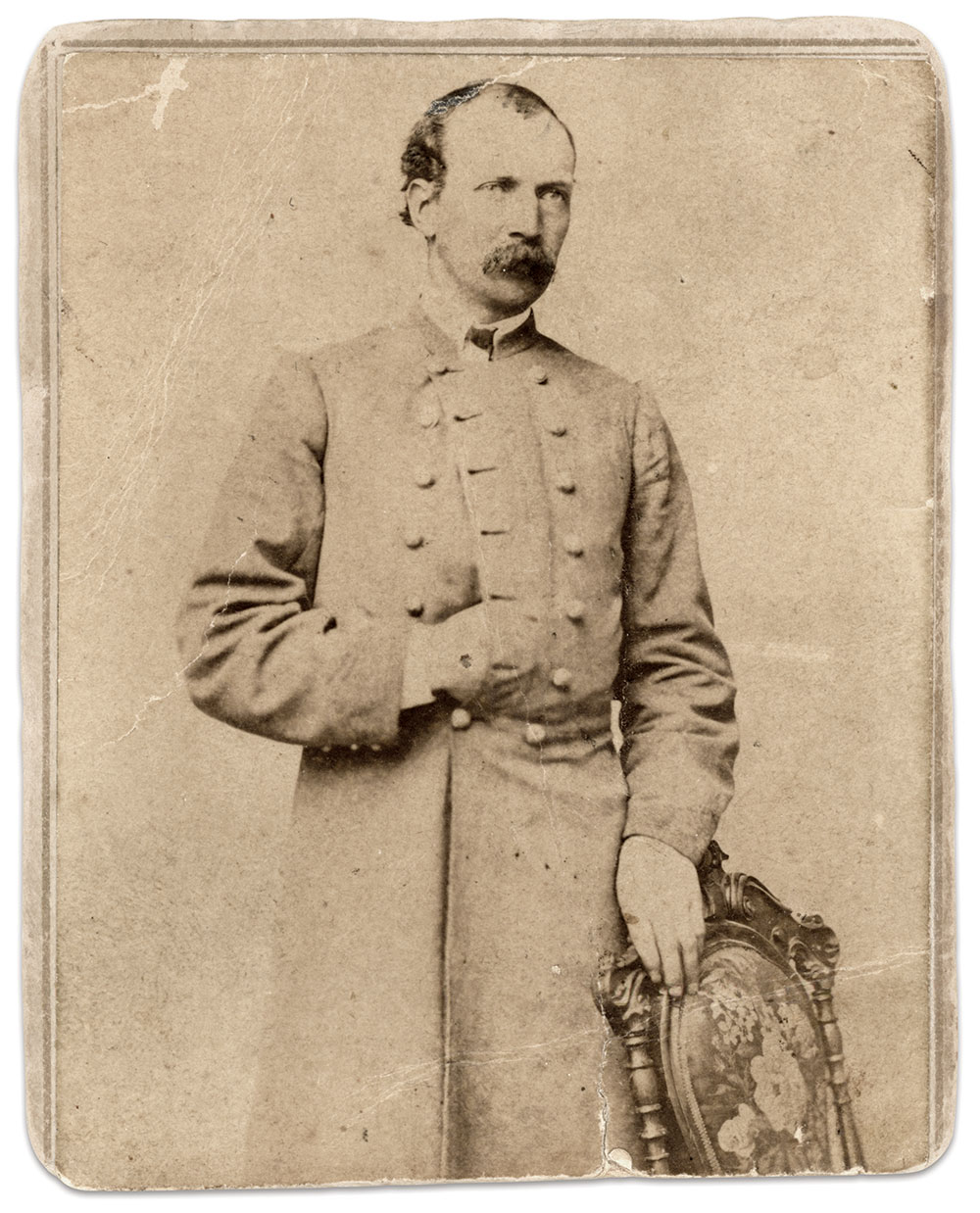
On May 19, 1863, in Virginia’s Shenandoah Valley near Winchester, Union troops captured Capt. Warren Griffith Welsh, 28, of the 1st Maryland Cavalry. Letters he carried and information he shared revealed his mission—to bushwhack enemy pickets. He was imprisoned at Fort McHenry in Baltimore.
Born and raised in Maryland, he had represented Montgomery County at the state’s secession convention in February 1861. After it failed and the war began, he followed many Marylanders to Virginia, where he joined the 7th Virginia Cavalry. In 1862, he organized a new cavalry company that mustered into Confederate service as Company D of the 1st Maryland. He commanded his company when captured near Winchester. On or about June 13-14, 1863, less than a month after his imprisonment, he escaped from Fort McHenry, made his way back to the Confederacy, and rejoined his command. He served until the war’s end and signed the oath of allegiance at Salisbury, N.C.
Welsh settled in Libertytown, Md., and worked for the Internal Revenue Service as a maple sugar inspector. Active in his local Confederate Veterans’ camp, he “was always conspicuous by his presence at gatherings … and the incidents he related of the late war were greatly enjoyed.” He died in 1895 at age 58. His wife, Mary, and five children survived him.
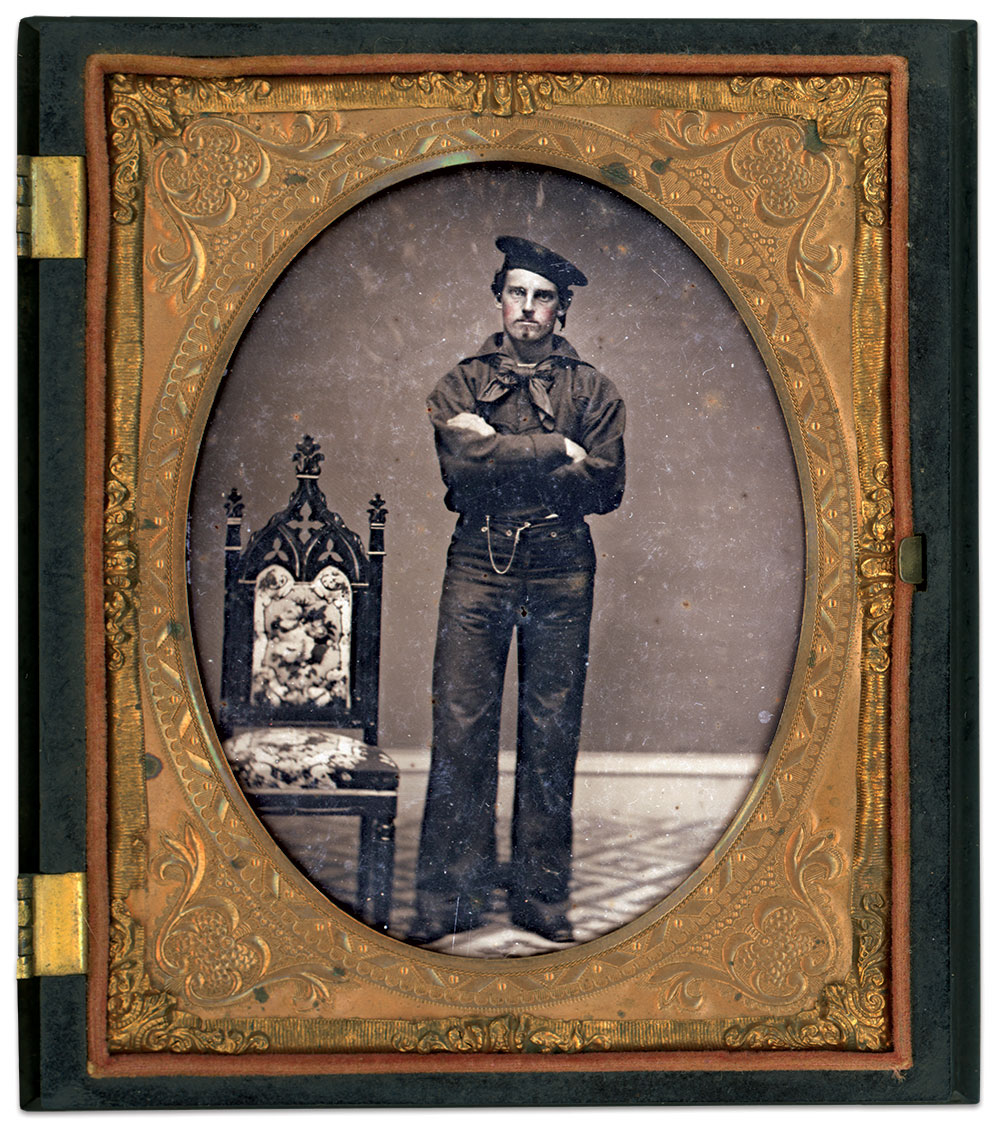
Dressed for shore leave, this sturdy-looking sailor wears a cloth cap with short piece of black silk ribbon attached to the side of the cap band, plain woolen frock with broad collar, black silk neckerchief, drop front trousers with flap fastened by small mother-of-pearl buttons, and calfskin shoes. He likely has a pocket watch or folding rope knife attached to a gold chain tucked into his trouser flap.
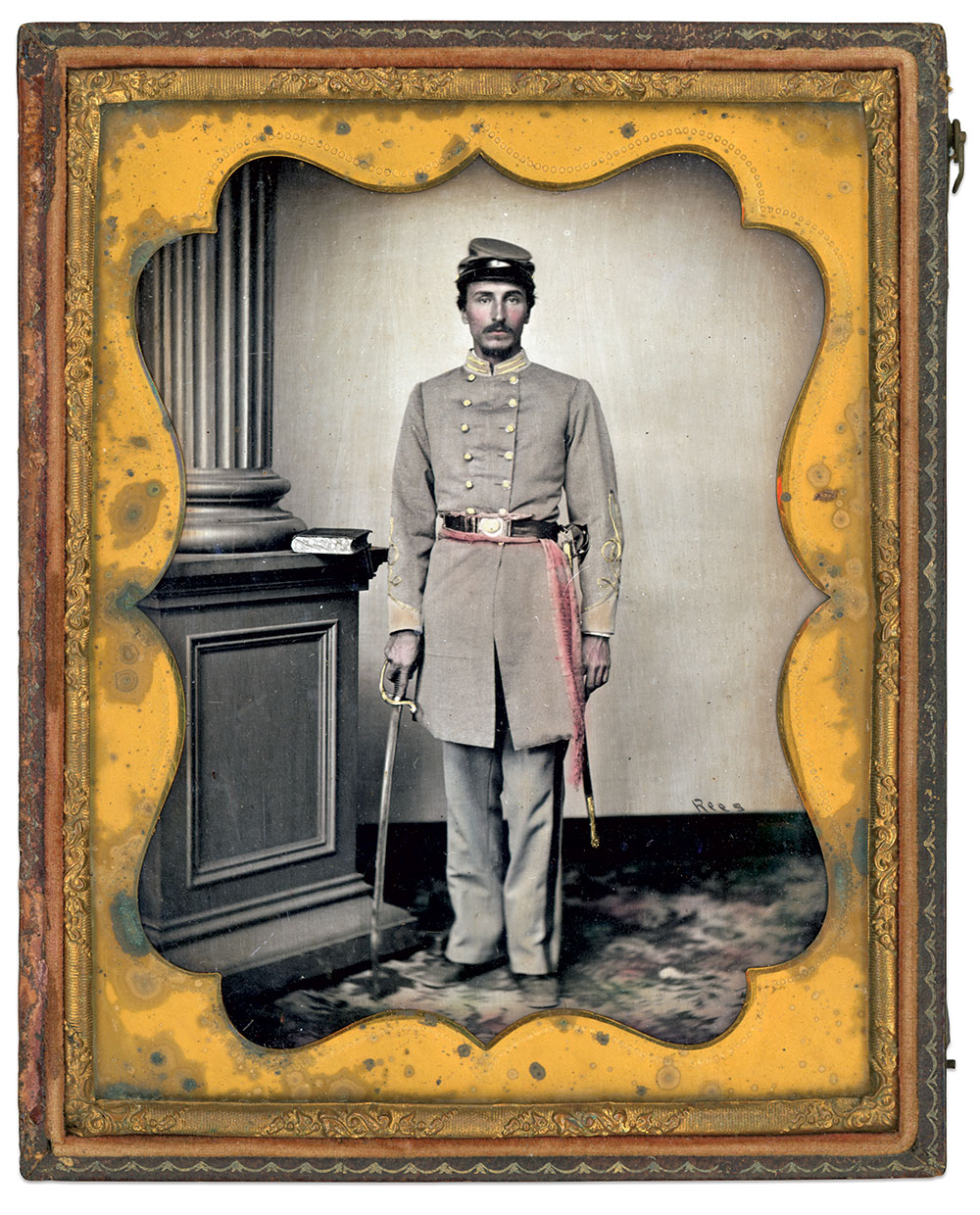
This Confederate first lieutenant posed in Charles R. Rees’ Richmond studio early in the war. He holds a U.S. Model 1850 foot officer’s sword. Collector Art O’Leary purchased this portrait at a Michigan estate sale in 2018. How it came to be in Michigan is a mystery. It may have been brought home by a Michigan soldier as a war souvenir, or belonged to a Southern family that moved to the Upper Midwest in search of work between World War I and the 1970s.
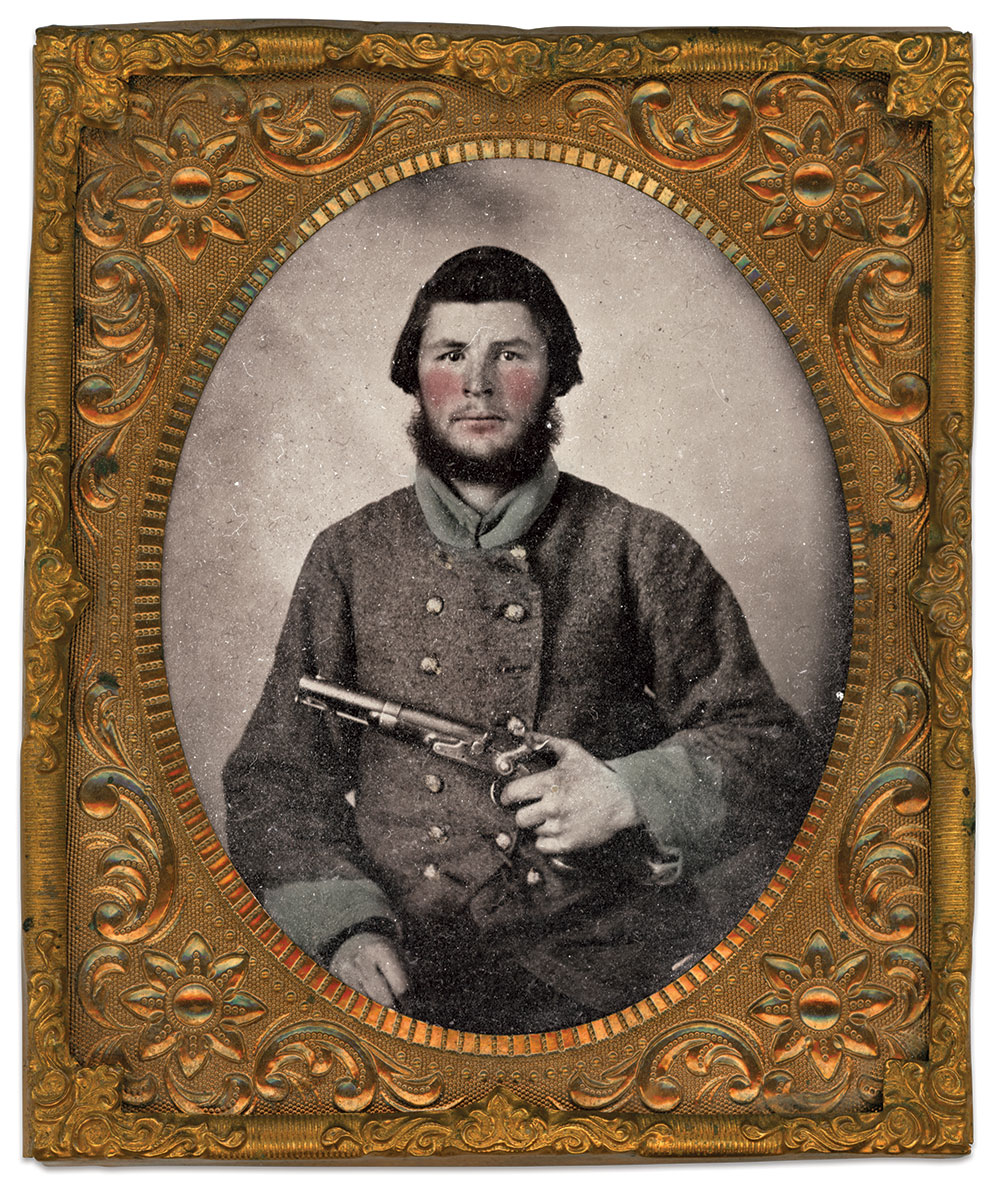
The Southern-altered sidearm held by this Confederate soldier appears to be a Model 1836 Robert Johnson or Asa Waters Jr. Contract Flintlock pistol, notes MI Contributing Editor Phil Spaugy. He adds that it “has been altered to percussion by removing the flintlock ‘battery’ on the exterior of the lock and inserting a drum bolster into the original flintlock touchhole. Also the original flintlock hammer has been replaced with a new percussion hammer.” His uniform suggests Alabama or Tennessee origins.
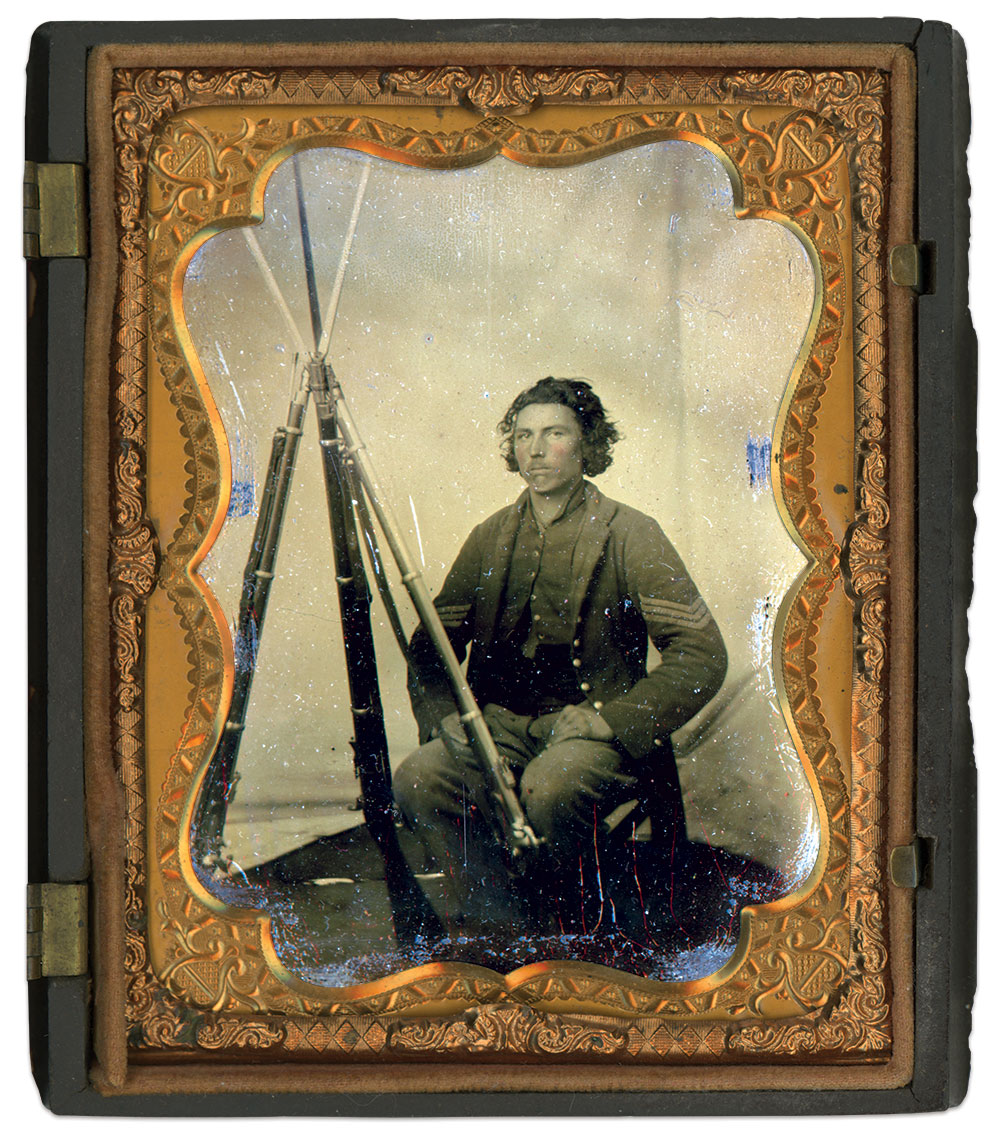
A sergeant, his name and details of his service lost in time, sits beside a stand of muskets.
SPREAD THE WORD: We encourage you to share this story on social media and elsewhere to educate and raise awareness. If you wish to use any image on this page for another purpose, please request permission.
LEARN MORE about Military Images, America’s only magazine dedicated to showcasing, interpreting and preserving Civil War portrait photography.
VISIT OUR STORE to subscribe, renew a subscription, and more.


1 thought on “Confederate and Union Portraits of Note”
Comments are closed.